2023 年 iPhone 对比表:每款 iPhone 对比

Picking out an iPhone used to be easier—just get the newest one with all the storage you can afford. We still recommend buying as much storage as you can afford, but the choice of which iPhone to get it on isn’t quite so simple. Apple currently sells eight iPhone models, four of which launched in fall 2022, one in spring 2022, two from 2021 and one from 2020. Plus you can still buy older refurbished models from the Apple Refurbished Store and elsewhere. Apple offers all this choice because, quite simply, different people have different priorities.
Apple’s latest iPhone lineup includes the iPhone 14, iPhone 14 Plus, iPhone 14 Pro and iPhone 14 Pro Max, which it sells alongside the iPhone 13, iPhone 13 mini, iPhone SE (3rd gen) and iPhone 12. The “best” iPhone depends on your own personal preferences, so it’s not necessarily the case that the number one iPhone is the one you should buy. This group test of all the iPhones Apple sells should give you a good idea of which iPhone will suit you, and whether you can save money or if it would be worth spending more.
For more help choosing the iPhone for you read our Buying Guide where we explain how each iPhone is different in terms of price, specs and features, cameras, screens and durability. See: Which iPhone? iPhone buying guide.
iPhone specs compared
Apple sells five current-generation model iPhones: four iPhone 14s and the iPhone SE. You can also buy the iPhone 13 mini, iPhone 13, and iPhone 12. Here’s how their most important specs compare but remember, specs aren’t everything!
| iPhone SE (3) | iPhone 14 | iPhone 14 Plus | iPhone 14 Pro | iPhone 14 Pro Max | iPhone 13 | iPhone 13 mini | |
|---|---|---|---|---|---|---|---|
| Starting price | $429/£449 | $799/£849 | $899/£949 | $999/£1,099 | $1,099/£1,199 | $699/£749 | $599/£649 |
| Screen size | 4.7″ | 6.1″ | 6.7″ | 6.1″ | 6.7″ | 6.1″ | 5.4″ |
| Size (H x W x D) | 5.45″ x 2.65″ x 0.29″ | 5.78″ x 2.82″ x 0.31″ | 6.33″ x 3.07″ x 0.31″ | 5.81″ x 2.81″ x 0.31″ | 6.33″ x 3.05″ x 0.31″ | 5.78″ x 2.82″ x 0.30″ | 5.18″ x 2.53″ x 0.30″ |
| Weight | 5.09 oz | 6.07 oz | 6.14 oz | 7.27 oz | 8.47 oz | 6.14 oz | 4.97 oz |
| Colors | Starlight, midnight, red | Blue, purple, midnight, starlight, red | Blue, purple, midnight, starlight, red | Deep purple, gold, silver, Space Black | Deep purple, gold, silver, Space Black | Pink, blue, midnight, starlight, red | Pink, blue, midnight, starlight, red |
| Display | LCD (326 ppi) | OLED with HDR (460 ppi) | OLED with HDR (458 ppi) | OLED with HDR (460 ppi), ProMotion 120Hz | OLED with HDR (460 ppi), ProMotion, 120Hz | OLED with HDR (460 ppi) | OLED with HDR (476 ppi) |
| Processor | A15 Bionic (4-core GPU) | A15 Bionic (5-core GPU) | A15 Bionic (5-core GPU) | A16 Bionic (5-core GPU) | A16 Bionic (5-core GPU) | A15 Bionic (4-core GPU) | A15 Bionic (4-core GPU) |
| Storage | 64/128/256GB | 128/256/512GB | 128/256/512GB | 128/256/512GB/1TB | 128/256/512GB/1TB | 128/256/512GB | 128/256/512GB |
| Authentication | Touch ID | Face ID | Face ID | Face ID | Face ID | Face ID | Face ID |
| Rear Camera | 12MP f/1.8 Wide camera | 12MP f/1.5 Wide camera, 12MP f/2.4 Ultra Wide camera |
12MP f/1.5 Wide camera, 12MP f/2.4 Ultra Wide camera |
12MP f/1.78 Wide camera, 12MP f/2.2 Ultra Wide camera (macro), 12MP f/2.8 Telephoto (3x) |
12MP f/1.78 Wide camera, 12MP f/2.2 Ultra Wide camera (macro), 12MP f/2.8 Telephoto (3x) |
12MP f/1.6 Wide camera, 12MP f/2.4 Ultra Wide camera |
12MP f/1.6 Wide camera, 12MP f/2.4 Ultra Wide camera |
| Front Camera | 7MP f/2.2 camera, 1080p | 12MP f/1.9 camera, 4K HDR | 12MP f/1.9 camera, 4K HDR | 12MP f/1.9 camera, 4K HDR | 12MP f/1.9 camera, 4K HDR | 12MP f/2.2 camera, 4K HDR | 12MP f/2.2 camera, 4K HDR |
| Battery capacity | 1,821mAh | 3,279 mAh | 4,325 mAh | 3,200 mAh | 4,323 mAh | 3240mAh | 2348mAh |
| Wireless features | 5G (sub-6 only), Wi-Fi 6, Bluetooth 5.0, NFC |
5G, Wi-Fi 6, Bluetooth 5.0, NFC, Ultra Wideband |
5G, Wi-Fi 6, Bluetooth 5.0, NFC, Ultra Wideband |
5G, Wi-Fi 6, Bluetooth 5.0, NFC, Ultra Wideband |
5G, Wi-Fi 6, Bluetooth 5.0, NFC, Ultra Wideband |
5G, Wi-Fi 6, Bluetooth 5.0, NFC, Ultra Wideband |
5G, Wi-Fi 6, Bluetooth 5.0, NFC, Ultra Wideband |
| MagSafe | No | Yes | Yes | Yes | Yes | Yes | Yes |
1. iPhone 14 Pro – Best new iPhone
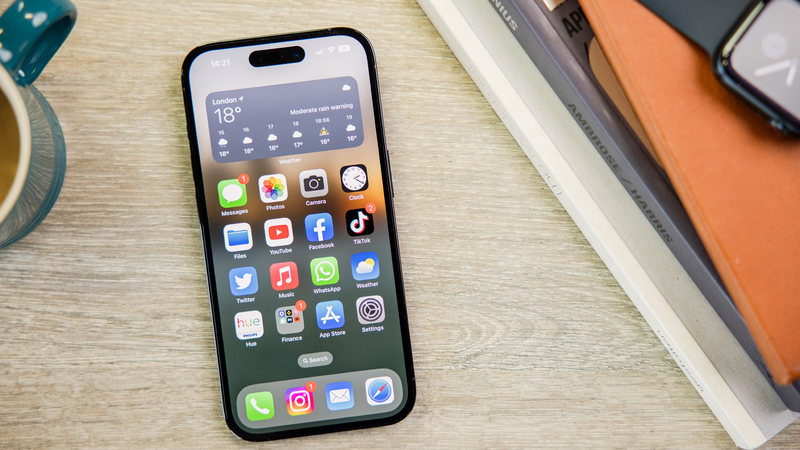
Pros
- Dynamic Island is a big step forward for the iPhone interface
- Always-on display, finally
- 48MP camera shines in ProRAW format
- Excellent battery life
Cons
- Photos are a bit over-processed
- Big cameras can get in the way
- Some features are waiting on software updates
Best Prices Today:
$999.99 at Best Buy
There are two new features that are exclusive to the iPhone 14 Pro (and Max) that actually change the way you use your iPhone for the better: the always-on display and Dynamic Island. Implementation of the always-on display is excellent and Dynamic Island is a revelation.
To create the Dynamic Island Apple shrunk the notch that holds all the Face ID sensors and front-facing camera and moved it down into a little pill-shaped cutout that can change to display useful information like timers, sports scores and even the details of the currently playing music track. It’s a hit.
Thanks to the always-on mode the time and date, lock screen widgets and notifications remain visible when your phone isn’t in use. Apple dims the screen significantly, but there is a small impact on battery life. If you place your iPhone screen down on a table, or leave the room while wearing a connected Apple Watch, the screen will turn off.
There are other improvements to the screen tech. The most significant: the iPhone 14 Pro can crank up to 2,000 nits in bright sunlight so you can see the screen on a sunny day.
The iPhone 14 Pro (and Max) have the best cameras ever seen on an iPhone. There is a new 48MP main wide-angle camera, a much bigger sensor and an f/1.78 aperture. These combine with the new Photonic Engine to create better low light photos. You can take 48MP shots if you shoot in ProRAW – which will mean each photo will take up to 80MB of space. Instead of taking 48MP shots the iPhone 14 Pro (and Max) are able to use the extra detail captured by the 48MP shot to create a better 12MP photo. For example, you can zoom in further without losing the detail. Speaking of zooming, there are also improvements to macro photography (which can now also be used for video). Macro photography is unique to the Pro iPhones.
The front camera also gets an update that includes a wider f/1.9 aperture (up from f/2.2) and autofocus (the same update is available on the iPhone 14). Video recording also get improvements including support for 4K at 30fps in Cinematic Mode and the new Action Mode that stabilises video is recorded on the move (also on iPhone 14).
The iPhone 14 Pro (and Max) get a A16 Bionic chip, which is a newer generation of chip than the A15 Bionic inside the iPhone 14. However, our tests suggested that it’s not a huge leap up from the A15. In our somewhat extreme battery tests the 14 Pro lasted an impressive 9 hours and 44 minutes, which was about half an hour longer than the iPhone 13 Pro. Apple claims 23 hours battery life for the iPhone 13 Pro based on its own tests.
The iPhone 14 Pro, like the whole iPhone 14-series can detect if you are in a car crash. There is also a satellite SOS feature, so your iPhone can contact the emergency services if there is no cellular service. That’s only available in the U.S. and Canada right now. In the U.S. the iPhone 14 series has no SIM tray, meaning that you’ll need an eSIM.
There is one other feature that is unique to the 14 Pro and Max: they feature dual-band precision GPS, which should mean they are better at locating you in areas with tall buildings and tall trees. Never get lost again!
The always-on display and especially the Dynamic Island will transform how you use the iPhone. The 2022 update represents a significant improvement on the iPhones that have come before.
Read our full
Apple iPhone 14 Pro review
2. iPhone 14 Pro Max – Best battery life

Pros
- Excellent battery life; longest of all iPhones (for now)
- Dynamic Island is a big step forward for the iPhone interface
- Always-on display, finally
- 48MP camera shines in ProRAW format
Cons
- May be too big for some users
- Camera array protrudes farther out than previously
- Photos are a bit over-processed
- Some features require software updates and are not yet available
Best Prices Today:
$1099.99 at Best Buy
There’s a lot that’s the same when you consider the iPhone 14 Pro and iPhone 14 Pro Max, so many of the features of the iPhone 14 Pro Max are discussed in the section above including the always-on display, Dynamic Island, and the camera improvements. But there are some significant ways that the iPhone 14 Pro Max trumps the iPhone 14 Pro, such as battery life and the larger display. However, choosing between the two phones is really a matter of personal taste: for some people the Max is too big, for others the Pro too small.
There’s also the price difference. If you do want the bigger Pro iPhone then you’ll be paying more for it – unless you consider the iPhone 14 Plus instead (discussed next). For the 2022 iPhone line up there are two 6.7-inch iPhones: the Pro Max and the Plus, so you no longer have to pay more to get a bigger screen. However, there are some good reasons to pick the Max over the Plus.
One clear advantage of purchasing the Max is that it brings the Dynamic Island, while the Plus retains the notch. We’ve discussed the Dynamic Island in the iPhone 14 Pro section above, so we won’t repeat ourselves other than to say people are loving the innovative Dynamic Island and it does really add value to the iPhone.
Like the iPhone 14 Pro the Max also offers the always-on screen, which is another very good reason to pick the Max over the Plus. Having an always-on display will mean you can see the time and important notifications without waking the iPhone. There are some battery implications to this, but they aren’t huge – and the battery in the Max is huge: Apple indicates that you can expect 29 hours of video playback on the Max, while the Plus can achieve 26 hours in the same test. In our tests (Geekbench 4) the iPhone 14 Pro Max’s battery lasted 12 hours and 40 minutes–about an hour longer than the iPhone 13 Pro Max and much longer than the 14 Pro, which lasted 9 hours and 44 minutes. We haven’t yet tested the battery in the iPhone 14 Plus, but we know it to be the same 4,325 mAh battery as the Pro Max, so it is feasible that battery life, in our tests, could be even better since it lacks power guzzling features such as ProMotion and the Always-On display.
If you run out of battery all iPhones can take advantage for fast charge with a USB-C 20W power brick (which you’ll have to purchase separately). The larger phones take 35 minutes to charge to 50%, while the smaller phones take 30 minutes for the same – but obviously those batteries are smaller.
There are a variety of camera updates that the complete iPhone 14-series benefit from, as discussed in the iPhone 14 Pro section, but the main feature unique to these pro models is the ability to take 48MP photos. Note that the camera doesn’t take 48MP photos by default, only when in ProRAW mode. Also, 48MP photos take up a lot of space – so you’ll need an iPhone with as much memory as you can afford if you want to use the feature.
You do get more for your money with the iPhone 14 Pro Max: a larger phone has more room for a bigger battery, and the extra screen space is attractive to many. However, the bulk of the iPhone is off-putting for many and this is the most expensive handset Apple sells – especially if you need more than 128GB storage.
Read our full
Apple iPhone 14 Pro Max review
3. iPhone 14 – Good enough
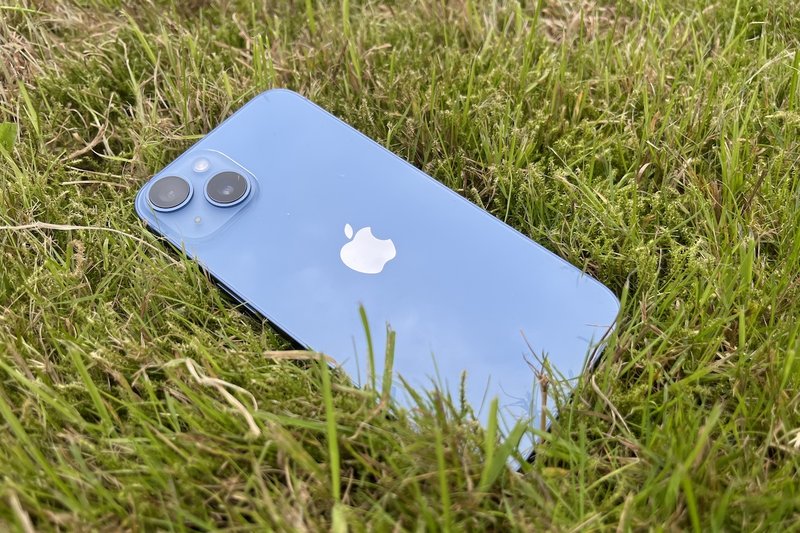
Pros
- Action Mode is brilliant
- Faster low light shots so you don’t have to hold the iPhone still for as long
Cons
- Price increase in many parts of the world
- No Dynamic Island or always-on display
- Few changes as compared to the now cheaper iPhone 13
Best Prices Today:
$799.00 at Apple$799.99 at Best Buy
It’s been a few years since Apple last introduced an S iPhone, but the iPhone 14 could just as easily have been called the iPhone 13s. Rather than upgrading the processor to the A16 Bionic, as seen in the iPhone 14 Pro (and Max), the iPhone 14 (and Plus) instead features the A15 Bionic, albeit the variant from the iPhone 13 Pro, which means it has an extra graphics core compared to the iPhone 13, which is still on sale.
The fact that the iPhone 13 is still on sale, and similar in so many ways, is the biggest challenge facing the 2022 iPhone 14. If you are upgrading from a few-years-old iPhone there’s a choice of two iPhones: one of which will save you $100/£100.
But there are some features offered by the iPhone 14 that do justify the extra expense. The cameras are by far the biggest difference between the iPhone 14 and iPhone 13–the newer model includes a faster aperture (ƒ/1.5 rather than ƒ/1.6) and a larger sensor on the main camera to bring better overall performance and improvements in low-light shooting. The iPhone 14 also benefits from a new Photonic Engine computational system that helps capture more detail in challenging light and aids features such as the new Foreground Blur. This isn’t just about getting better low light photos – you don’t have to hold the iPhone still for as long, which is a real bonus.
The Action Mode is another bonus feature that makes the iPhone 14 a better phone than the iPhone 13. Action Mode means you can video while walking, or even running and get a steady result. It’s a fun feature that people will probably take advantage of. The selfie camera on the front is also improved on the iPhone 14, with a bigger aperture and autofocus.
There are other features that the iPhone 14 offers and the iPhone 13 lacks, such as the Crash Detection feature. If you are in such a situation then you’ll probably be glad to have the 14.
However, there are reasons to choose the iPhone 13 over the iPhone 14, as we will discuss next.
Read our full
Apple iPhone 14 review
4. iPhone 14 Plus – a reasonable compromise

Pros
- Large format at a lower price
- Great battery life
Cons
- No Dynamic Island
- No always-on display
Best Prices Today:
$899.00 at Apple$899.99 at Best Buy
As we said in the section on the iPhone 14 Pro Max, the iPhone 14 Plus is rocking the boat a bit because it means that people who might have chosen the iPhone 14 Pro Max because they want a big iPhone now have a choice. They can save $200/£250 and purchase a new iPhone with standard features. Or, to look at it another way, they can choose between a 512GB iPhone 14 Plus for $1,199/£1,279 or a 256GB iPhone 14 Pro Max for $1,199/1,309. For some more storage will trump additional Pro features.
Perhaps the biggest problem is that the price isn’t all that different to the iPhone 14 Pro, and that is a much better iPhone that costs $999/£1,099 compared to $899/£949 for the iPhone 14 Plus. At just $100/£150 less you’d have to really want the bigger handset.
The iPhone 14 Plus (and iPhone 14) feature two cameras on the rear, while the Pro phones offer three cameras–for some that flexibility will be a good enough reason to pick Pro. Across the board photography is improved compared to the previous generation, with the big difference being in low-light photography (in our experience the biggest difference here is how long you have to keep the phone still while taking the photo – handy with a bulky handset. Like the Pro phones the iPhone 14 and 14 Plus benefit from Action Mode, which enables you to take stable video while you are moving – no bumping up and down in time with your steps. The front-facing camera also gets an upgrade with autofocus and a wider aperture.
Apple claims the iPhone 14 Plus can achieve up to 26 hours video playback compared to 29 hours for the iPhone 14 Pro Max. In our tests the Plus was slightly behind the Pro Max. The battery life score was around the same as the iPhone 13 Pro Max battery life.
The iPhone 14 Plus is a good phone, the main problem is really the price, with the iPhone 14 Pro not costing a whole lot more. However, we do think the iPhone 14 Plus will be attractive to those who might have bought the iPhone 14 Pro Max at a time when people are trying to avoid overspending.
Read our full
Apple iPhone 14 Plus review
5. Apple iPhone 13 mini – Best small iPhone
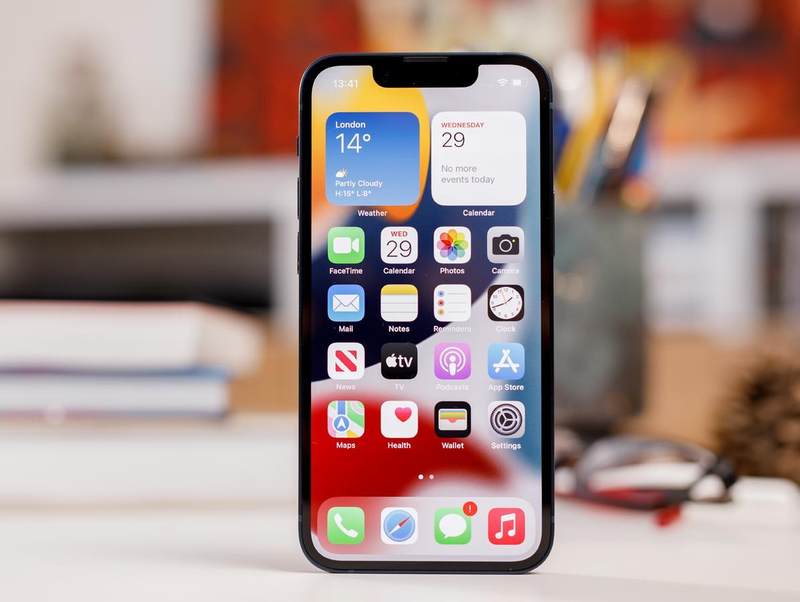
Pros
- Portable size
- Last mini iPhone Apple is likely to sell
Cons
- Lower battery life
Best Prices Today:
$719.99 at Amazon
The iPhone 13 mini is the last of its kind and for that reason we are positioning it above the iPhone 13. If you want a small iPhone, and some people do, the iPhone 13 mini is one of two small iPhones sold by Apple – the other being the iPhone SE 3rd generation. The iPhone 13 mini has a 5.4-inch screen, which is bigger than the iPhone SE’s 4.7-inch screen, but the iPhone size isn’t all that different.
The iPhone 13 mini is the only small iPhone with Face ID and it also offers a lot that the iPhone SE lacks, such as better water resistance (the SE offers Water resistant to a depth of 1 meter for up to 30 minutes while the iPhone 13 mini offers Water resistant to a depth of 6 meters for up to 30 minutes). The iPhone 13 mini features a the Ceramic Shield front, which the iPhone SE lacks, so the glass on front of the 13 mini should be less likely to smash the first time you drop it.
The iPhone 13 mini has a much better screen than the SE as well. It’s a Super Retina XDR display, that’s OLED and offers HDR. Resolution is 2,340-by-1,080-pixels at 476 ppi, there’s a 2,000,000:1 contrast ratio, 800 nits max brightness (typical), 1200 nits peak brightness (HDR). In contrast the SE has a Retina HD display that’s LCD with IPS technology, 1,334-by-750-pixel resolution at 326 ppi, 1400:1 contrast ratio, and just 625 nits max brightness (typical).
There’s a nice bunch of color finishes to choose from with the iPhone 13 mini: Green, Pink, Blue, Midnight, Starlight, Red. The SE only comes in Midnight, Starlight and Red.
One final, and key, reason to choose the iPhone 13 mini if you want a small iPhone is that the cameras are much better than those on the SE. The mini offers two cameras on the rear while the SE only offers one camera.
Read our full
Apple iPhone 13 mini review
6. Apple iPhone 13 – Good value option
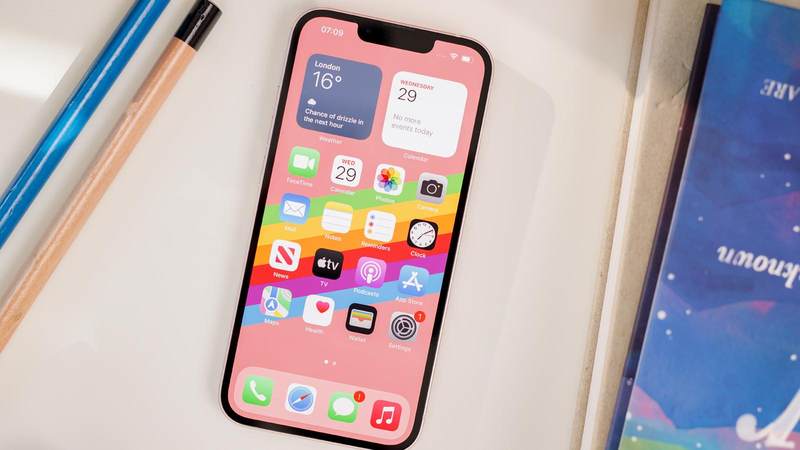
Pros
- Same generation processor as the iPhone 14
- Can get more storage for your money
Cons
- Lacks Action Mode
- Lacks the camera improvements of the iPhone 14
Best Prices Today:
$829.00 at Amazon$829.00 at Apple
The iPhone 13 costs $100/£100 less than the iPhone 14, and for many spending the extra money to get a newer iPhone with more features will make sense. However, there are reasons to choose the iPhone 13 over the iPhone 14.
The key reason, we feel, is that the extra money spent on the iPhone 14 could be spent increasing the storage in the iPhone 13. The iPhone 14 costs $799/£849 with 128GB storage, but you could get an iPhone 13 with 256GB storage for $799/£859. There is certainly an argument for getting the maximum amount of storage you can afford – especially if the phone you are upgrading from has more storage.
Even with the arrival of the iPhone 14, the iPhone 13 is still a decent iPhone, especially when compared to the iPhone 12, which is also on sale. Both the iPhone 14 the iPhone 13 have a smaller notch than the iPhone 12 – in fact visually there is little to tell the 13 and 14 apart (which will mean that at a glance nobody will know you have last year’s phone). You might even prefer the deeper colors of the 2021 iPhone in contrast to the muted shades for 2022.
There is actually one design difference that you might notice if you placed the two phones side-by-side, the cameras on the back of the iPhone 14 stick out quite a lot more. This means if you place the iPhone 14 on a surface (without a case) it doesn’t lie very flat. There have always been criticisms of how far out the cameras protrude on the iPhones, and for 2022 they stick out even more. There’s good reason for the protrusion, but it does spoil the design a bit. Not that it matters once you’ve put your iPhone in a case (which you should do!) See: Best iPhone cases.
If you are looking to upgrade from an older iPhone the main point is that in 2022 you won’t be sacrificing as much as you would have in previous years in choosing the iPhone 13 over the iPhone 14. So if you want to save your money you can confidently do so.
Read our full
Apple iPhone 13 review
7. Apple iPhone SE (2022) – The cheapest iPhone
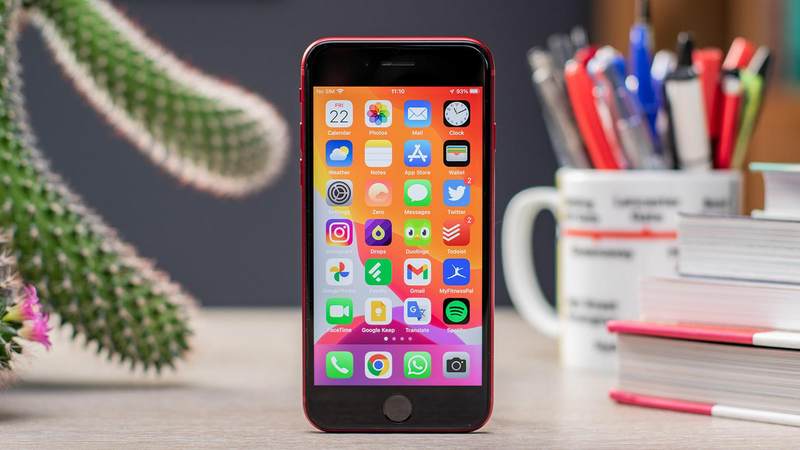
Pros
- A15 chip
- Cheapest iPhone
Cons
- Old, mediocre quality cameras
- Dated display with huge bezels
- No mmWave support
- Disappointing battery life
Best Prices Today:
$429.00 at Amazon$429.00 at Apple$429.99 at Best Buy
We mentioned the iPhone SE above because it, and the iPhone 13 mini, are the only small iPhones sold by Apple. These handsets are a similar size to the iPhone 8, so if that’s the iPhone size that’s right for you then these are the iPhones to consider – although we’d suggest an iPhone with a 6.1in screen (the iPhone 12, 13 or 14) would be preferable (the screen is larger but the iPhone isn’t a lot bigger).
However, there’s one other important reason why for some people the iPhone SE is a good choice. Anyone who feels that they need the Home button will probably feel lost with any iPhone other than the iPhone SE. While most of us can adjust to Face ID and swiping rather than pressing a button, some benefit from the accessibility of a physical button, and there is no doubt that is the reason why Apple still sells an iPhone with a button (although we don’t know for how much longer that will be the case). There is a way to add a software Home button to any iPhone though. Read: How to add a software Home button.
The other reason to choose the iPhone SE is that it is Apple’s cheapest iPhone you can buy new – although the price has actually risen in some locations since it launched. It now costs $429/£449, but it was £419 in the U.K. when it launched in March 2022. The older generations were even cheaper – at one point the iPhone SE cost $399.
While we don’t really recommend buying the iPhone SE, if you need that Home button – and we know some older folk who are concerned about not having that button – it’s the only modern option and definitely preferable to an old iPhone 8, which probably won’t be supported with software updates from 2023.
Read our full
Apple iPhone SE (2022) review
8. Apple iPhone 12 – Cheapest iPhone with Face ID

Pros
- Face ID
- MagSafe charging
Cons
- Outdated chip
- Large notch
Best Prices Today:
$629.00 at Apple$629.99 at Best Buy
Starting at $599/£649 this is the second cheapest iPhone after the iPhone SE. The iPhone 12 has been around for a while now though – it launched in 2020.
While it lacks the headline features of the past couple of years, the iPhone 12 offers many of the most popular features like Night mode, and if you want an iPhone with Face ID then this is your cheapest option. It’s also the cheapest 6.1-inch screen on an iPhone – and the screen is no different to that on the iPhone 13 and 14.
The processor is A14 Bionic, so don’t expect the power of the newer iPhones, but if you are upgrading from a much older iPhone you are likely to still see benefits. Just keep in mind that Apple won’t always support the A14 chip, so you’ll probably get one year less use out of it than you would a phone with the A15. See: How long do Apple iPhones last for.
The camera offers many of the features of the newer iPhones including Night Mode (which is missing from the iPhone SE), but you won’t find Photographic Styles (which are on the SE). Of the two photography related features we’d pick Night Mode over Photographic Styles, which are basically filters that are applied to every photo you take. The other thing that’s better about the iPhone 12 compared to the SE is that it has two cameras on the rear, rather than just one. This gives you the choice of a wide angle lens so you can fit more in a photograph – these cameras are the same as the iPhone 13: a 12MP Main (ƒ/1.6 aperture) and 12MP Ultra Wide (ƒ/2.4 aperture. All other iPhones offer two or more cameras on the rear. Find out how the iPhone 12 compares to the iPhone 13 mini – both of which start at the same price of $599/£649.
Read our full
Apple iPhone 12 review
That’s the low down on every iPhone Apple sells as of fall 2022, but there are a couple of iPhones that Apple no longer sells, but are worth considering should you see them on sale.
Find out the fastest ways to charge an iPhone.
Best iPhones Apple doesn’t sell anymore
If you are lucky enough to see the iPhone 13 Pro or iPhone 13 Pro Max on sale at a good price we still recommend these handsets.
iPhone 13 Pro
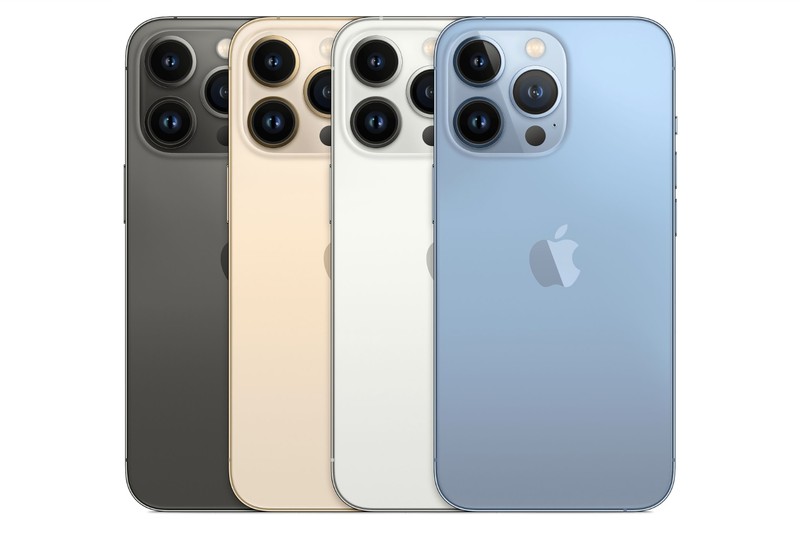

Best Prices Today:
$999.00 at Amazon
The “Max” variant of the iPhone 12 Pro had a different camera system than the regular-size iPhone 12 Pro, but with the iPhone 13 Pro, the standard size and Max versions had the exact same cameras, so pick the size that suits you.
Compared to the regular iPhone 13, the Pro models also had a much larger sensor on the standard Wide camera, and a wider aperture, too (f/1.5 vs. f/1.6). They also had the telephoto camera that the regular iPhone 13 lacks, with a more useful 3x zoom instead of the 2x zoom found on older models. And the Ultra-Wide camera had a wider aperture along with a 2-centimeter minimum focal distance, which allows you to take awesome macro shots.
iPhone 13 Pro Max


Best Prices Today:
$1,099.00 at Amazon
The iPhone 13 Pro Max had the fastest new A15 processor with 5 GPU cores instead of 4 on the standard and mini iPhone 13. This extra core really comes into its own in high-end 3D games. While the iPhone 13 Pro and iPhone 13 Pro Max have identical performance, the huge battery in the iPhone 13 Pro Max means epic battery life (and nothing drains your battery like gaming).
